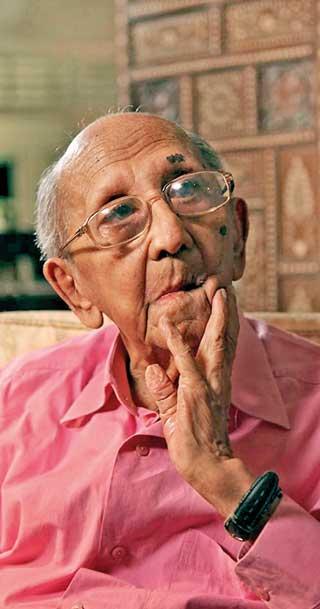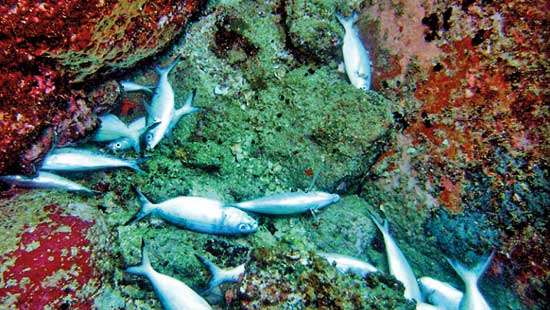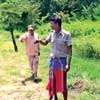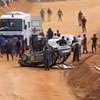By
D. B. S. Jeyaraj
Renowned Sri Lankan Film Maker Lester James Peries passed away three years ago at the age of 99. Among the many who paid homage to the Maestro at that time was Asoka Handagama who is one of the two brightest directorial stars in the Sinhala film firmament of today. (The other is Prasanna Vithanage). Asoka used a reference by Russian writer Fyodor Dostoevsky to highlight an interesting comparison between Gogol and Peries.
Asoka Handagama was quoted then in a news story on Lester James Peries in “The Hindu” written by its Colombo correspondent Meera Srinivasan: “They say that Dostoevsky once said ‘we all come out of Gogol’s Overcoat’. The same way, we all came out of Peiris’s ‘Rekava,’” Handagama told The Hindu.
The impact and influence of Nikolai Gogol on the “golden age” generation of Russian writers was immense and that is what Dostoevsky’s oft-quoted remark meant. Likewise well-known director Asoka Handagama’s allusion was to emphasise the sea change brought about in Sinhala cinema by the advent of Lester James Peries and the influence of the pioneering director on future Sri Lankan filmmakers.
Lester’s third death anniversary was on April 29. As stated earlier, this column would be focusing on a cinema-related topic in the first week of every month. As such this article seeks to commemorate the life and work of Lester James Peries. Lester is my favourite Sinhala movie director about whom I have written extensively in the past. I shall be relying on some of those writings for this article.
His parents wanted him to become a lawyer or a doctor while his teachers wanted him to be a Catholic priest. Lester however wanted to study literature and began writing stories, poems and plays from his student days. He was also an incurable film buff
‘Rekava’ (Line of Destiny)
Let me begin with Lester’s first feature film the path-breaking “Rekava” which according to Handagama could be termed as the Mother of real Sinhala Cinema.‘Rekava’ (Line of Destiny) directed by Lester James Peries premiered at the Regal Theatre in Colombo on December 28, 1956. ‘Rekava’ was the path-breaking film that altered the destiny of Sinhala cinema. (Though Rekava is spelt with both a ‘V’ as well as a ‘W’ in English, I am sticking to V because the original titles shown in the film spelt it with a V).
Veteran journalist Mervyn de Silva, writing about ‘Rekava’ after the premiere, described it as ‘the birth of Sinhala cinema’.Well-known journalist, critic and writer Regi Siriwardena was exhilarated after seeing it. He called it an ‘event of tremendous importance’ in an excellent review written by him in the Sunday Observer. The following excerpt from that review sums up aptly the significance of the film: “And so, in the very first few moments of ‘Rekava,’ – “you realise you are in an entirely different world from that of the Sinhalese film up to now. We are no longer watching preposterous puppets animated by synthetic emotions; this is life itself. What Lester Peries has done is to tear down the artificial barriers that the Sinhalese film industry had erected between the screen and the real life of our own people.”
Regi and Mervyn and many others who praised ‘Rekava’ were impressed by the fact that the film dispensed with the melodramatic hallmarks prevalent in Sinhala movies since the first Sinhala talkie ‘Kadawuna Porunduwa’ or Broken Promise was made in 1947. The making of Sinhala films in the early years was heavily influenced by Hindi and Tamil films made in India which were derisively described as ‘Masala movies’ or ‘formula films’. It was said that the only things Sinhala about them were the actors, dialogue and the words in the songs. ‘Rekava’ was a departure which contrasted sharply with the usual Sinhala films. Lester was in that sense the emancipator of Sinhala cinema.
He discovered his roots and became appreciative of the island’s cultural heritage, something which his upper middle class anglicised existence had restricted earlier
Affluent Westernised Background
Lester James Peries was born on April 5, 1919, in Dehiwala to Catholic parents from an affluent Westernised background. His father Dr. James Francis Peries had studied medicine in Scotland. His mother Ann Gertrude Winifred Jayasuriya was the first student to pass the Cambridge senior exam at St. Bridget’s Convent. Lester had three siblings, Erica, Ivan and Noel.
Young Lester had his schooling at St. Peters College, Bambalapitiya. His parents wanted him to become a lawyer or a doctor while his teachers wanted him to be a Catholic priest. Lester however wanted to study literature and began writing stories, poems and plays from his student days. He was also an incurable film buff. Lester dropped out of school at the age of seventeen and became a journalist. He worked at ‘Daily News’ and later at ‘Times of Ceylon’. Lester also reviewed books for ‘Radio Ceylon’. It was then that he began dabbling in drama by joining a theatre group called the ‘Drama Circle’. It is said that the legendary Lionel Wendt realised Lester’s creative potential and advised his parents to allow him to do whatever he wished.
Peries went to London in 1947 to join his brother Ivan Peries a reputed painter. The brothers lived together for some years and apparently led a Bohemian way of life bordering on the avant-garde. Lester wrote a column from Britain for the ‘Times of Ceylon’ in Colombo, then edited by Frank Moraes. It was titled ‘Letters on the Arts from England’.
While working as a correspondent of ‘Times of Ceylon’, Peries also engaged himself in making short films and documentaries. A short film, ‘Soliloquy’ made in 1949 won an award for artistic and technical merit from the Institute of Amateur and Research Filmmakers of Great Britain in 1951. He also produced another award winner ‘Farewell to Childhood’. It was based on a short story he had written when in Sri Lanka, but on film, he adapted it to English surroundings.
Government Film Unit (GFU)
It was the eminent filmmaker Ralph Keene who was instrumental in persuading Lester to return home. “You should make films in your own country, about your own people,” Ralph told him. Returning to Ceylon in 1954 Lester joined the Government Film Unit (GFU) headed by Ralph Keene himself. Lester began churning out documentaries on several subjects including malaria and vehicular traffic for the GFU. In the process, he was exposed to new experiences of life. He discovered his roots and became appreciative of the island’s cultural heritage, something which his upper middle class anglicised existence had restricted earlier.
Associated with him at the GFU were cameraman Willie Blake and editor Titus Thotawatte. Yearning to create meaningful films the trio resigned from the GFU and embarked on the path-breaking ‘Rekawa’ venture. What inspired Lester James Peries to quit the Government Film Unit along with colleagues Willie Blake and Titus Thotawatte and embark upon the venture to make an authentic and realistic Sinhala film?
What Lester Peries has done is to tear down the artificial barriers that the Sinhalese film industry had erected between the screen and the real life of our own people
Three film factors deeply influenced and motivated Lester in this yearning to make a realistic film amidst a rural setting. The first was the semi-fictional documentary ‘Nelungama’ made by Lester’s boss at the GFU Ralph Keene. Lester had co-written the script and the dialogues for it. While filming, Lester was exposed to village life and longed to make a film in a rural environment. The second was the impact of Italian neo-realistic cinema, particularly the films of Vittorio de Sica, Luchino Visconti and Roberto Rossellini. The third was the film ‘Do Bigha Zameen’ (Two acres of land) by Indian Director Bimal Roy that brought rural life to the screen in a realistic manner.
Lester’s early training as a documentary filmmaker as well as his penchant for creative literature were reflected in his films. According to Regi Siriwardena, the twin hallmarks of Lester’s auteuristic film making approach were his stylistic “construction of narrative” and ability to “capture and project actualities in a realistic manner.”
Lester’s films captured emotions and moods vividly on screen. These expressions were two-fold in the sense that they consisted of clearly articulated or manifested emotions on the one hand and also of unarticulated, underlying feelings on the other. Complex relationships, poignant moods, tense undercurrents, etc. are portrayed in a unique style that is simple and comprehensible. What is outstanding in his films is the underlying humanism.
Lester’s early training as a documentary filmmaker as well as his penchant for creative literature were reflected in his films
Sri Lankan family Themes
Lester’s films do not have very overt political content. The political message if any is quite subtle. As Lester himself explained in his own words, “I cannot make intensely political films. Politics is there on the periphery, in films like Yuganthaya, where there is a reference to the tension between labour and capital. All my themes are about the Sri Lankan family. I use the family as a microcosm through which the problems of a larger world are reflected. I understand my limitations and work within this. To me, the battles within the family are more important and far more intense than anything outside of it.”
Though he filmed several novels and short stories, Lester was able to break away from the bondages imposed by strictures of literature and the stage. Economy of dialogue was a hallmark in most of his films. His narrative style blended cinematic images into the story with telling effect. There are long gaps of silence between dialogues. It is said that Lester had a shooting script but deviated from it as the film was being shot. He improvised with innovative spontaneity as shooting proceeded. The nature of Lester’s films has been described as the “cinema of contemplation” and his narration of the “language of silence” by connoisseurs.
Made Twenty Feature Films
In a film making career spanning more than five decades, Lester James Peries made Twenty feature films in all. The first of his feature films was the path-breaking ‘Rekava’ or line of destiny in 1956. His final feature was ‘Amma Waruney’ or an elegy to a mother released in 2006. Lester James Peries has also made 11 short films, most of them in documentary mode. The first of these short films was ‘Soliloquy’ made in 1949 and the last ‘Kandy Perahera’ filmed in 1973.
The greatness of Lester however cannot be measured by the quantity of his output. It is the qualitative excellence of his films that elevated him to commendable heights over the years. ‘Rekava’ (Line of Destiny), ‘Gamperaliya’ (Changes in the Village) and ‘Nidhanaya’ (Treasure) are widely accepted as the three finest films made by Lester. In 1997- the golden jubilee year of Sinhala cinema- the Government of Sri Lankan (GoSL) identified ten films as foremost among the best films made in the 50-year history of Sinhala cinema. Lester’s Rekava, Gamperaliya and Nidhanaya were included in that list.
“Rekava” shot entirely in Sri Lankan outdoor locations was hailed as a turning point in the decade-long evolving history of Sinhala cinema. Rekava was screened by invitation at the10th Cannes film festival l held from May 2 -17, 1957. Rekava dubbed in English as “line of destiny” did not win but Lester James Peries won significant fame for Sri Lanka known as Ceylon then by gaining world exposure for a Sinhala film for the first time.
Three film factors deeply influenced and motivated Lester in this yearning to make a realistic film amidst a rural setting. The first was the semi-fictional documentary ‘Nelungama’ made by Lester’s boss at the GFU Ralph Keene.
‘Gamperaliya’ (Changes in the Village)
‘Gamperaliya’ (Changes in the Village) was released on December 20, 1963. The film placed Sri Lanka then known as Ceylon on the global cinema map by winning gold at two international film festivals. The film won the ‘Golden Peacock’ award for Best Film at the third International Film Festival of India (IFFI) held from January 8 to 20, 1964 in New Delhi. It also won the Golden Head of Palanque award in 1965 at the Mexico International Film festival held in Acapulco. Gamperaliya won silver at the 1967 Cork Film festival in Ireland. Prior to its public release, ‘Gamperaliya’ also competed at the third Moscow International Film Festival in July 1963 and won a Merit certificate.
‘Gamperaliya’ also harvested many awards at home. The Sarasaviya awards are the Sri Lankan equivalent of the Oscars. The event was introduced by the Sarasaviya weekly published by the Associated Newspapers of Ceylon Ltd. (Lake House). The first Sarasaviya film festival was held on May 9, 1964, at the Asoka Theatre in Colombo. All Sinhala films produced between 1960 and 1963 were up for awards. Only five awards were given, for Best Film, Best Director, Best Actor, Best Actress and Best Script Writer at this pioneering event.
‘Gamperaliya’ swept the boards, winning four out of five. Producer Anton Wickremasinghe accepted the award on behalf of ‘Gamperaliya’ for Best Film. Lester James Peries was Best Director. Regi Siriwardena was Best Script Writer and Punya Heendeniya Best Actress. Only the Best Actor prize eluded ‘Gamperaliya’. It went to D.R. Nanayakkara for ‘Sikuru Tharuwa’.
‘Nidhanaya’ (Treasure)
Nidhanaya’ (Treasure) made earlier in 1970 was later entered for the 1972 Venice International Film Festival where the film won the Silver Lion of St. Mark award. It also received a certificate as one of the outstanding films of the year at the London Film Festival. ‘Nidhanaya’ was also included in the global list of 100 best films to be ever made that was compiled by the Cinematheque Institute of France to mark the World Film Centenary. The film won the award at Sri Lanka’s Golden Jubilee of Independence for being the best Sinhala movie in 50 years. The creative effort of director Lester James Peries along with the collaborative efforts of cast and crew resulted in the film ‘Nidhanaya’ becoming a cinematic treasure.
Satyajit Ray of India
Analogies have often been drawn between the South Asian contemporaries Satyajit Ray of India and Lester James Peries of Sri Lanka. India’s greatest filmmaker Satyajit Ray(whose Birth Centenary is May 2 ) had burst upon the global film scene before Lester James Peries. Ray’s ‘Pather Panchali’ was made in 1955 and ‘Aparajito’ in 1956.
Since Lester’s Rekava was released in December 1956 many reviewers wrongly assumed that Ray had inspired Peries. Satyajit Ray himself considered Lester to be of the same mould as him and once referred to the Sri Lankan director as his “closest relative East of the Suez.” In spite of the creative affinity between the two, Peries was not influenced by Ray when he made his first film.
Writer and scholar, Regi Siriwardena once told me in an interview that Lester had not seen ‘Pathar Panchali’ or ‘Aparajito’ when he first made ‘Rekava’. Regi, who has worked as scriptwriter with Peries on some films, told this writer that the first Ray film viewed by Lester was ‘Aparajito’ and that too was only after ‘Rekava’ was made. “It is a classic instance of two great Asian directors being of the same creative wavelength and proceeding on a parallel course independent of each other,” stated Siriwardena then.
Sumitra Gunawardena
Lester James Peries was married to Sumitra Gunawardena in 1964. She had earlier worked as an assistant director on Lester’s “Sandesaya” (The Message). Sumitra then became the Editor for Gamperaliya. Thereafter she was the editor for several other films directed by Peries. Later Sumitra herself became a reputed director with several notable films to her credit.
Apart from Rekava, Gamperaliya and Nidhanaya, some of Lester’s other milestone movies s include ‘Delovak Athara’ (Between Two Worlds), ‘Golu Hadawatha’ (Silent Longing) ‘Ran Salu’ (Golden Robe), ‘Akkara Paha’ (Five Acres), Desa Nisa” (The Eyes, “Madol Duwa” (Enchanted Island), ‘Ahasin Polowata’ (From Sky To Earth) , ‘Beddagama’ (Village In The Jungle), “Kaliyugaya” (Age of Kali), “Yuganthaya” (End of an Era) and “Awara Gira” (The Sunset).
The only English film made by Peries was ‘God King’, a Sri Lankan-German co-production. With a blend of foreign and local artistes, the film was shot in Sri Lanka. The story revolved around the Sinhala monarch Kasyapa who built the Lion Fortress- palace rendered famous by its frescoes on Mount Sigiriya. The stipulations of a foreign-funded movie restricted Peiris’s creative control and cramped his style severely. The result was quite visible in the finished product which was not one of the director’s best works.
Lester’s films captured emotions and moods vividly on screen. These expressions were two-fold in the sense that they consisted of clearly articulated or manifested emotions on the one hand and also of unarticulated, underlying feelings on the other
Lifetime Achievement Award
Twenty-four years ago at a ceremony held to mark the golden jubilee of Sri Lankan cinema; Lester James Peries was presented the Lifetime Achievement Award by then President Chandrika Kumaratunga. After the event in an interview given to senior journalist Roshan Peiris, a visibly-moved Lester said: “I treasure this award a lot given for my contribution to the local film industry. It is a distinction that does make me feel that my film career has been worthwhile.”
When asked by Roshan Peiris what the secret of his successful film making was, Lester replied: “My success I think is partly due to the fact that I never compromised. I went ahead and did what I wanted to do and did not deviate from that, no matter what the pressures on me were. Also one must have a deep sense of dedication, despite ups and downs.”
An Inspiring Beacon
Lester James Peries was the pioneer of authentic Sinhala cinema. It was he who created in every sense of the term an indigenous cinema in both substance and style. It was also Lester who first gained worldwide recognition for Sinhala cinema. Lester emancipated Sinhala cinema and guided it to new vistas where the medium of film was understood and appreciated. It is widely acknowledged that Lester was indeed the pioneer who went off the beaten track and proved to be an inspiring beacon for the filmmakers who followed him.
D.B.S.Jeyaraj can be reached at dbsjeyaraj@yahoo.com


























